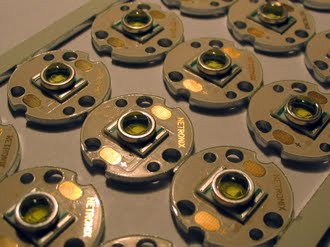 Those semiconductors in which some impurity atoms are embedded are known as extrinsic semiconductors.
Those semiconductors in which some impurity atoms are embedded are known as extrinsic semiconductors.
Extrinsic semi conductors are basically of two types:
1. P-type semi conductors
2. N-type semi conductors
N-type Semi conductors: Let’s take an example of the silicon crystal to understand the concept of N-type semi conductor. We have studied the electronic configuration of the silicon atom. It has four electrons in its outermost shell. In N-type semi conductors, the silicon atoms are replaced with the pentavalent atoms like phosphorous, bismuth, antimony etc. So, as a result the four of the electrons of the pentavalent atoms will form the covalent bonds with the silicon atoms and the one electron will revolve around the nucleus of the impurity atoms with less binding energy. These electrons are almost free to move. In other words we can say that these electrons are donated by the impure atoms. So, these are also known as donor atoms. So, the conduction inside the conductor will take place with the help of the negatively charged electrons. Electrons are negatively charged. Due to this negative charge these semiconductors are known as N-type semiconductors.
Each donor atom has denoted an electron from its valence shell. So, as a result due to loss of the negative charge these atoms will become positively charged. The single valence electron revolves around the nucleus of the impure atom. Some experiments were performed. It was found that .01eV and .05eV energy is required to make the electron free from the nuclear forces.
When the semi conductors are placed at room temperature then the covalent bond breakage will take place. So, more free electrons will be generated. As a result, same no of holes generation will take place. But as compared to the free electrons the no of holes are comparatively less due to the presence of donor electrons.
We can say that major conduction of n-type semi conductors is due to electrons. So, electrons are known as majority carriers and the holes are known as the minority carriers.
